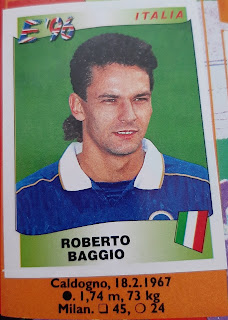156: Barry Horne, Everton, Merlin’s Premier League 95 Sticker Collection
Everton Football Club’s men’s team bade farewell to Goodison Park at the end of last season after 133 years with a 2-0 victory over Southampton. The Grand Old Lady has hosted more top flight games than any other English ground, owing to Everton spending all but four seasons up there since their move across Stanley Park in 1892, as well as an FA Cup final and five games during the 1966 World Cup. Somewhat fittingly it also hosted the infamous Dick Kerr’s Ladies team in 1920 in front of 53,000 spectators in a match that was seen as part of the reason for the FA’s ban on women’s football. While the men’s team move to the imaginatively named Everton Stadium for 2025/26 the women’s team will inherit Goodison for their Women’s Super League campaign.
During their time at Goodison the club won eight league titles, five FA Cups and the European Cup Winners’ Cup and enjoyed the brilliance of Dixie Dean, Graeme Sharp and Neville Southall. Since the advent of the Premier League, however, such glory days have been few and far between with flirtation with relegation a far more common occurrence than forays into Europe. In 1998 a final day draw with Coventry City saved the Toffees and relegated Bolton Wanderers on goal difference. In 2003 the emergence of Wayne Rooney and the poor quality of the three sides below them spared them their blushes despite ending the season with four consecutive defeats. The questionable decisions to appoint former Liverpool manager Rafael Benitez, and then Frank Lampard, as well as years of mismanagement in the board room, nearly cost Everton their Premier League status in recent years and a returning David Moyes has at least spared them such ignominy this season. The same could not be said at the end of 1993/94.
While Everton endured a run of the mill mid-table inaugural Premier League campaign the drama started the following year. The Toffees were top after three games before their form deteriorated and, at the start of December, club legend Howard Kendall resigned as manager. It took the club a month to secure a permanent replacement, during which they gained a solitary point from seven games, leaving new man Mike Walker the unenviable task of arresting their slide down the table. A rousing win against league whipping boys Swindon Town looked to have kick started a resurgence but a miserable run in March and April saw the Toffees drop into the relegation zone with one game to play. Within twenty minutes of their final day home fixture with Wimbledon they were 2-0 down and playing poorly while Sheffield United, their nearest rivals for the drop, were leading at Chelsea. Graham Stuart pulled one back following a debatable penalty but the Crazy Gang continued to create chances with Dean Holdsworth, the housewives’ favourite, squandering some absolute sitters. With just over twenty minutes remaining the ball fell to midfielder Barry Horne who juggled it through two challenges before launching it into the top corner from miles out. A regalvanised Everton piled on the pressure and Graham Stuart found the net to complete the comeback and, thanks to Sheffield United’s capitulation at Stamford Bridge, secure his side’s top flight status.
Prior to this Barry Horne had scored just once for Everton since his move from Southampton in 1992. Primarily a hardworking central midfielder his most prolific campaign was for Fourth Division Wrexham back in 1986/87 which spanned 66 games thanks to The Red Dragons’ commitments in the Welsh Cup and Cup Winners’ Cup. He had made his name in North Wales with a vital late goal against Porto in the latter competition in 1984 securing Wrexham’s progress to the second round and was a regular across three seasons before moving to Portsmouth in 1987. He moved across the South Coast to Saints before the aforementioned transfer to Everton where, as well as his iconic goal, he picked up the club’s Player of the Year award in 1995 following their FA Cup victory over Manchester United. After one more season at Goodison he moved on to Birmingham City before spells with Huddersfield Town, Sheffield Wednesday, Kidderminster Harriers and Walsall. Horne also won 59 caps for Wales, captaining the side on 28 occasions, and lending his name to the Red Wall’s brass section “The Barry Horns”.
Barry Horne’s moment of brilliance at Goodison Park earned Mike Walker only a brief stay of execution as, after one win in twelve at the start of 1994/95, he was given his marching orders. Despite being described by Neville Southall as preferring his suntan to football Walker returned to Norwich City before heading to Cyprus with APOEL where he could probably combine his two interests nicely. Horne’s fellow final day hero, Graham Stuart, moved on to Sheffield United in 1997 before balancing financial management with occasional punditry and ambassadorial work for the Toffees. Horne, meanwhile, made use of his first class Chemistry degree and entered the world of teaching. As well as serving as Head of Physics at King’s School, Chester he has also been a prominent backroom influence at a resurgent Wrexham and been Chair of the footballers’ union the PFA. As Everton make the move to their new home on Bramley-Moore Dock they could do with the all round nous and commitment of Barry Horne to avoid the last day drama he calmly guided them through back in 1994.





Comments
Post a Comment